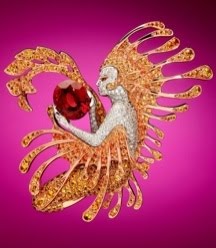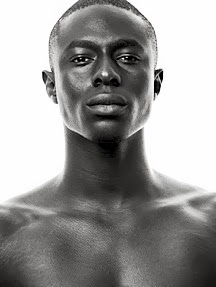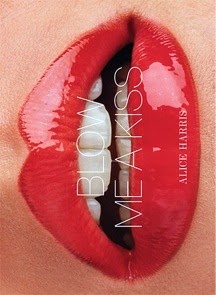 Cartier opened its doors to Paris shoppers in 1847, but has grown, in the last century and a half, into a worldwide phenomenon. Alfred Cartier, the founder's son, was a true visionary who established much of the jewelry house's forward momentum by assigning different tasks to his talented children: Louis oversaw Cartier Paris; Jacques presided over the London franchise; and Pierre was dispatched to New York. At first, he ran his U.S. business from a second-floor boutique, established in 1909; but in 1917, he stunned customers and competitors alike by purchasing an entire townhouse for just $100 (throwing in an extraordinary pearl necklace, worth a million dollars, to sweeten the deal). That property, at the corner of Fifth Avenue and 52nd Street, remains Cartier's primary stateside address to this day.
Cartier opened its doors to Paris shoppers in 1847, but has grown, in the last century and a half, into a worldwide phenomenon. Alfred Cartier, the founder's son, was a true visionary who established much of the jewelry house's forward momentum by assigning different tasks to his talented children: Louis oversaw Cartier Paris; Jacques presided over the London franchise; and Pierre was dispatched to New York. At first, he ran his U.S. business from a second-floor boutique, established in 1909; but in 1917, he stunned customers and competitors alike by purchasing an entire townhouse for just $100 (throwing in an extraordinary pearl necklace, worth a million dollars, to sweeten the deal). That property, at the corner of Fifth Avenue and 52nd Street, remains Cartier's primary stateside address to this day.The mansion also functions as an American HQ--Cartier's embassy, so to speak, to the United States. Americans were early customers, eager to join a worldwide fan club that already included royalty, society figures, theater folk and movie stars. This mutual admiration society is the theme behind Cartier...100 Years of Passion and Free Spirit in America, a small but well-curated exhibit highlighting relationships the jeweler enjoyed with some fascinating personalities. Vintage photographs and archival drawings provide context for objects of remarkable inventiveness, from Mona Bismarck's charming porcelain inkwell (enameled a rich, Chinese red) and Gloria Swanson's chic platinum-and-rock crystal bracelet, set with diamonds, to the Duchess of Windsor's witty, but wacky, gold tiger lorgnette with black enamel stripes and emerald eyes. Meanwhile, passions big and small play out room by room, from Prince Rainier's charming courtship of Grace Kelly to Richard Burton's take-no-prisoners entanglement with Mother Nature herself, Elizabeth Taylor.
Ironically, by the time Cartier's Love bracelet makes its appearance, in 1969, much of the drama seems spent. Taste makers in the '70s, like Jackie Onassis, appreciated quality, but wanted understatement rather than magnificence (many of the disco era's so-called fashion excesses seem almost quaint now, compared to recent explosions of logo mania); overwhelmed by cheap products, discerning shoppers looked for pedigreed items that could claim some sort of history. In this way, Cartier's simple Tank watch, launched in 1917, quietly became the world's most recognizable status timepiece; similarly, the Love bracelet (with its signature screws) is now firmly established as a key part of the jeweler's iconography. All of which is good for business, of course, and for romance, too: hearts around the world will continue beating a bit faster at the sight of that little red Cartier box.
Cartier...100 Years of Passion and Free Spirit in America is open daily, 10 am to 6 pm (12 pm to 5 pm Sundays) at 653 Fifth Avenue, until May 21; it will also be on display in Cartier's Beverly Hills store at 370 North Rodeo Drive, June 1-14. Cartier I Love You, by Bruce Weber, will be available in June (see Homework, below); proceeds benefit ServiceNation, www.servicenation.org.
www.cartier.com




















.jpg)

.jpg)

.jpg)


.jpg)




.jpg)







